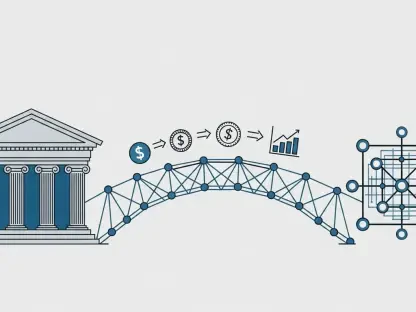Listen to the Article
Most businesses are treating the European Union’s Markets in Crypto-Assets Regulation (MiCA) as a compliance issue to be addressed. They are scrambling to meet its technical standards, viewing the framework as yet another costly regulatory burden. This state of mind is a profound strategic error, because this set of rules is not a hurdle. It’s the starting gun for the race to dominate Europe’s unified, multi-trillion-euro digital asset market. For years, the cryptocurrency industry has been hindered by a chaotic patchwork of national guidelines, resulting in immense friction and uncertainty. The MiCA sweeps that away, creating the world’s first comprehensive, harmonized crypto framework. By establishing a single, harmonized framework, the European Union aims to foster innovation, investor protection, and financial stability across member states.
While legacy financial institutions and unprepared firms focus on the costs of compliance, agile financial technology companies have a once-in-a-generation opportunity to seize a decisive advantage. This regulation is not about restricting the market; it’s about defining the rules of the road. Well-prepared businesses can leverage the European Union’s Markets in Crypto-Assets guidelines to scale.
The End of the Regulatory Maze
The single most powerful feature of this regulation is its “passporting” system. Before the MiCA, a crypto-asset service provider based in Lithuania needed to navigate a completely different set of licensing requirements to operate in Germany or France. This fragmentation created staggering legal costs and operational delays, effectively ring-fencing national markets.
But this governance replaces this maze with a single license. A crypto-asset service provider authorized in any one of the 27 European Union member states can now operate across the entire bloc.
It’s a game-changer for financial technology scale-ups. A small, innovative firm can now establish a foothold in a crypto-friendly jurisdiction such as Malta or Cyprus and immediately access a market of over 450 million consumers. This capability provides them with a significant speed-to-market advantage over larger banks, which are often burdened by complex, multi-jurisdictional compliance reviews.
The New Battleground for Trust
The European Union’s Markets in Crypto-Assets regulation imposes strict, bank-like guidelines on issuers of stablecoins, which it categorizes as asset-referenced tokens and electronic money tokens. These rules mandate robust governance, transparent reserve management, and orderly redemption plans. For many existing stablecoin issuers, these requirements will be a significant operational lift.
However, for well-capitalized and compliant players, this creates a powerful regulatory moat. By meeting the MiCA’s high standards, a stablecoin issuer can earn a stamp of legitimacy that is unavailable anywhere else in the world. The stamp is not just about compliance; it’s about building institutional and consumer trust, the most valuable commodity in finance.
A stablecoin that meets these standards can be one of the safest and most trusted digital assets. This feature sets it apart in a market still reeling from the fallout of well-known tokens that lacked strong support. Companies that achieve this level of trust can help launch a new era of decentralized finance and payment solutions between businesses in Europe.
The Global Ripple Effect
The impact of these rules extends far beyond the European Union’s borders. As the first significant economic bloc to implement a comprehensive crypto framework, the European Union is effectively setting the global regulatory standard. This phenomenon, known as the “Brussels Effect,” means that international firms seeking to access the lucrative European Union market must align their operations with the principles of the European Union’s Markets in Crypto-Assets regulation.
This creates an opportunity for European Union-based firms to become global leaders. A company that builds its infrastructure to be compliant from day one will find it far easier to expand into other jurisdictions as they inevitably adopt similar regulatory frameworks. A European Union license could soon become the de facto gold standard for crypto firms worldwide.
Seizing Advantage with MiCA
Treating the European Union’s Markets in Crypto-Assets regulation as a strategic opportunity requires a forward-looking and integrated approach. Instead of relying on rigid time-bound playbooks, businesses should adopt a flexible, capability-driven strategy that aligns regulatory compliance with long-term market positioning.
Map Competitive Levers
Evaluate which business lines, products, or services can most benefit from the European Union’s Markets in Crypto-Assets regulation’s unified licensing and regulatory clarity. Focus on areas where passporting can immediately expand your market reach.
Regulatory Infrastructure as a Differentiator
Treat compliance not as a checkbox but as a business asset. Invest in internal controls, governance frameworks, and technology that not only meet the European Union’s Markets in Crypto-Assets requirements but also signal reliability and transparency to enterprise clients and partners.
Collaborative Market Entry
Explore partnerships with local and regional financial technology players to accelerate market access. Leveraging existing networks in strategic member states can reduce operational friction while providing credibility.
Dynamic Expansion Planning
Develop a phased market entry and expansion strategy based on real-time feedback and performance metrics to optimize growth. Focus on the top-priority European Union markets, but remain agile to adjust as regulatory interpretations evolve or new opportunities emerge.
Stablecoin Leadership
Firms involved in stablecoins should establish a clear roadmap for governance, reserve transparency, and redemption mechanisms. Utilize compliance with the European Union’s Markets in Crypto-Assets regulation as a marketing tool to establish trust with both institutional and corporate clients, positioning your stablecoin as a high-assurance option within the European Union’s ecosystem.
Conclusion
The European Union’s Markets in Crypto-Assets rules are far more than a compliance exercise. It represents a historic opportunity for financial technology companies and other crypto-asset service providers to gain a first-mover advantage in a unified, multi-trillion-euro market. By viewing this rulebook as a strategic enabler rather than a hurdle, firms can leverage passporting, build trust through stablecoin compliance, and position themselves for global leadership as other jurisdictions adopt similar frameworks.
The future of digital assets in Europe will be shaped by those who see regulation not as a constraint but as a launchpad for innovation, credibility, and scale. Companies that embrace governance strategically today will define the marketplace tomorrow. Those who act early will not only secure compliance advantages but also shape emerging standards that influence future global markets.









